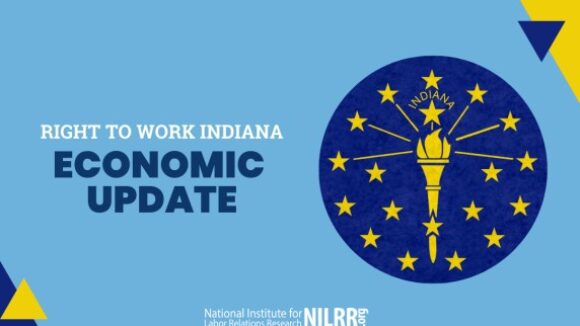Stellantis and Viking Group Choose Right to Work Indiana
Stellantis and Viking Group are both choosing to invest in Right to Work Indiana and will also be creating 376 new jobs as a result.
It’s been roughly 16 months since Indiana legislators heeded the pleas of their freedom-loving constituents and sent a measure prohibiting compulsory union dues and fees to the desk of then-Gov. Mitch Daniels, who promptly signed it. Ever since then, good economic news for Hoosiers has kept rolling in.
In a report this past weekend, Jeff Swiatek of the Indianapolis Star furnished some fresh details about how the Hoosier State’s employment growth is surpassing the expectations of most “analysts”:
Indiana’s shrinking jobless rate shrank again in April to 5.7 percent, as employers continued to pad their payrolls.
The latest downward tick of 0.2 percentage points from March means the state’s unemployment rate has now fallen by 2.1 points over the past year. That’s a surprise to most economic analysts, who had predicted a full year of stubbornly high or only slightly falling unemployment.
The April rate is the lowest since July 2008 and compares favorably to a U.S. unemployment rate for the month of 6.3 percent. Jobless levels in Indiana have remained below the national rate now for the past four months, after a sustained run at or above the national rate.
In many states, recent unemployment rate declines have been due largely to jobless workers moving out of state or dropping out of the labor force. But that’s far from the case in Indiana:
Indiana’s labor force increased by 11,700 in April, the seventh straight month of growth, Indiana Department of Workforce Development said Friday. For the first time since mid-2009, Indiana’s labor force participation rate last month — 63.2 percent — exceeded the national rate. That’s healthy because it shows that working-aged people who dropped out of the labor force for multiple reasons — including being too dispirited to even bother looking for work — are now returning to it.
And Right to Work Indiana has done especially well at creating opportunities for factory workers and young people who are interested in jobs in the industrial sector:
Manufacturing has been key to the jobs comeback. In fact, Indiana leads the nation in manufacturing job growth over the past year, with 13,400 added jobs.
Of course, the primary reason for adoption of Indiana’s Right to Work law was protection of employees’ freedom of choice. And as preexisting forced-unionism contract clauses in workplaces across the state expire more and more employees are able to make a personal choice about whether they want to continue furnishing financial support to their union monopoly-bargaining agent. But reports such as Swiatek’s offer compelling evidence that banning forced unionism isn’t just the right thing to do — it also facilitates job creation and income growth.

Stellantis and Viking Group are both choosing to invest in Right to Work Indiana and will also be creating 376 new jobs as a result.

Liberation Labs and soulBrain MI are both establishing new locations in Right to work Indiana.

GIM Inc and Doral Renewables are both investing in Right to Work Indiana! In fact, Doral Renewables is currently in Phase 2 of its $1.2 billion plan.